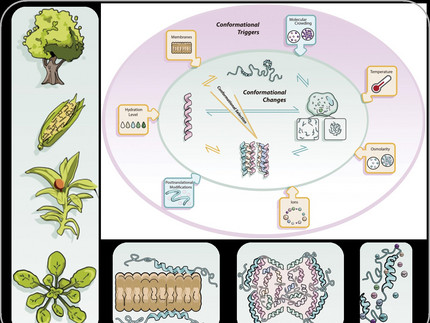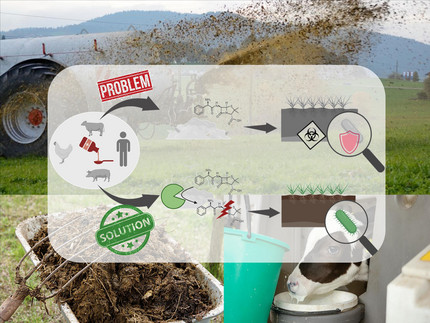Mechanisms of Biomolecule Stabilization by Intrinsically Disordered Proteins (IDPs) Under Dehydration Stress
Late Embryogenesis Abundant (LEA) proteins are essential for the tolerance of plants against dehydration-related stress and act as stabilizers for proteins, membranes, and nucleic acids in vitro. Dr. Anja Thalhammer’s research aims to understand how the dynamic structural properties of LEA proteins orchestrate their protective effects, with a special focus on interactions with metabolites such as sugars. This knowledge is crucial for the development of stress-tolerant plants. Beyond their natural role in plants, LEA proteins hold significant promise as excipients in pharmaceutical formulations. Their ability to safeguard biomolecules under harsh conditions like dehydration or freezing makes them highly valuable for stabilizing drugs and other biological products.
Download Transfer Offer 25-03 (PDF, 632 KB)
Enzymatic Inactivation of Antibiotics in Agricultural Waste
The Molecular Biotechnology research group, led by Prof. Dr. Katja Arndt, develops innovative solutions to combat antimicrobial resistance through the enzymatic inactivation of antibiotics in organic waste. In animal husbandry and agriculture, antibiotics enter the environment via waste products, feces, or milk from treated cows, promoting the development of antibiotic resistance. This can lead to the emergence of multidrug-resistant pathogens that are ultimately difficult or impossible to treat, posing a serious threat to human health.
Download Transfer Offer 25-02 (PDF, 628 KB)
Biopolymer Analytics for crop improvement
The 13 person strong team of the Biopolymer Analytics group led by Prof apl. Dr. habil Joerg Fettke, is interested in primary metabolism of plants, specially starch metabolism. Starch synthesis and degradation includes several enzymes (>40) and different glycans, sugars, and sugar derivatives. The interplay between all these components as well as the fluxes through the various pathways are of special interest to the group.
Download Transfer Offer 20-03 (PDF, 764 KB)



